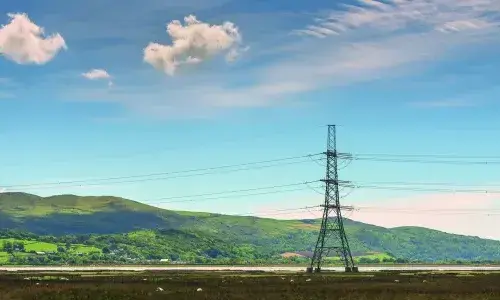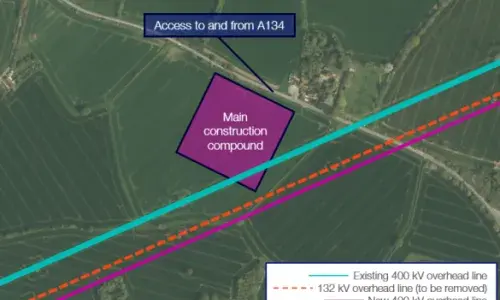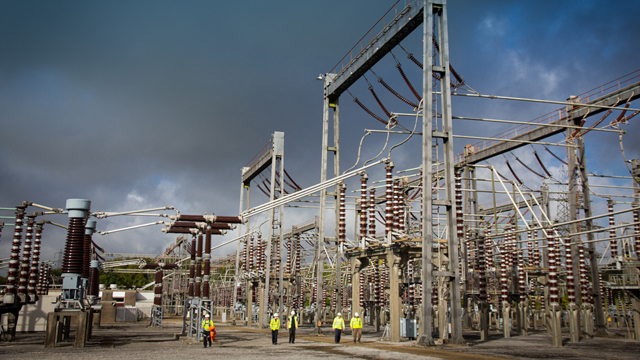
The process of substation expansion and creation
As the energy landscape shifts to meet the needs of changing energy requirements and the move towards net zero - existing sites and infrastructure such as substations are subject to high-capacity demands
Across England and Wales, energy generation projects such as wind or solar above 50MW* must connect into a transmission network substation to allow the electricity generated to flow across the network. They do this by connecting into ‘bays’ within the site. Large sources of electricity demand, such as factories or data centres, can also connect directly to our substations to draw the electricity they need from the national network.
So, what happens when a substation cannot be expanded due to physical, geographical or system limitations? Can it be extended upon, or does a whole new substation need to be built?
There are several different scenarios which may apply, depending on existing assets, and levels of customer demand.
Scenario 1: An existing site can be extended
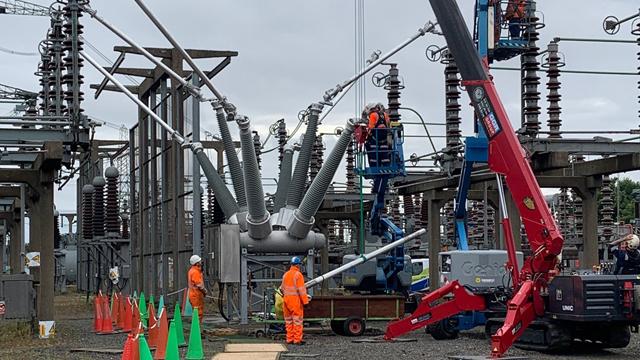
This means that a substation can be extended to accommodate more bays. This can then create additional points of connection for new customers. To safely extend capacity, National Grid Electricity Transmission (NGET) connection engineers will determine safe expansion limits and ensure the asset is utilised effectively. Customers who have requested connections on these substations will be delivered on a first come first serve basis.
Some works to extend the substation can be done without the asset needing to go offline. In gas insulated substations (GIS) halls may be extended for new connections to be added. This type of works would not need to request system access to be granted by the National Energy System Operator (NESO). In most cases however, NGET will need to request outages to access the system, which are typically carried out between the start of April and the end of October.
Scenario 2: An existing site is geographically unable to be extended upon
Certain substation sites cannot be extended upon due to geographical limitations. This could include the site being bordered by hilly terrain or marshland, or any other geographical characteristics that make the site unsuitable for further extension. Also, varying types of conservation protection must be considered. For example, neighbouring land may have protected woodland, or it may be a site of special scientific interest. The substation may also be bordered by other infrastructure, such as railway lines or other buildings that mean the location cannot be further expanded.
Scenario 3: An existing site is unable to be expanded upon due to land rights or infrastructure
Some substations may border non-NGET land. This land would have to be purchased from the owner - which may not always be possible . In some cases, National Grid can exercise Compulsory Purchase powers under the Electricity Act, however this is not always the most efficient option and can be refused in many cases.
Scenario 4: An existing substation is considered electrically full
Some substations may be restricted by electrical design criteria – for example fault levels. In these cases, the substation cannot support new connections and may trigger a full substation replacement to uprate equipment. This may not be viable or economical to undertake.
Triggering a new substation
When customers apply to connect, NGET will always look to utilise the existing assets at our substations to ensure maximum efficiency and minimise economic impact.
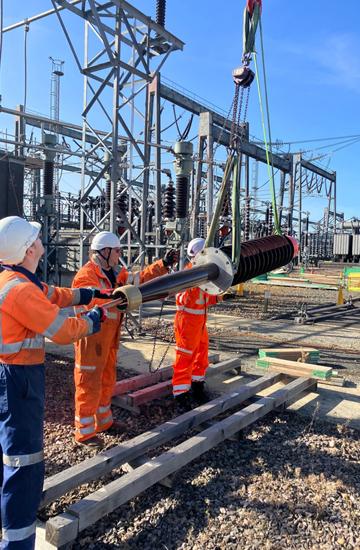
A new substation would only ever be offered for a customer application if we cannot resolve the scenarios outlined above.
So, if a new substation is needed, certain criteria must be met for NGET to sanction and build a new substation location.
The volume and location of new substations are largely determined by what generation and demand is contracted to connect to the network. The current magnitude of customers applying to connect to the network drives a requirement for a considerable number of new substations. Many of these new projects are not expected to connect, meaning there can be great uncertainty around substation build requirements. As part of the industry wide Connections Reform taking place, NGET's ambition is to move towards a strategic investment model for customer connections. This would involve de-coupling network design (needed for new substations) from customer applications and strategically investing in the network ahead of need. Within time, this measure being paired with an effective new connections process can result in a 'connection ready' network for customers, enabling faster connections and delivery of net zero.
Under current processes, once a connection application has been received, a process called whole system planning must then be undertaken to ensure the best possible option of the lowest possible cost to the consumer is chosen. In the standard offer process, the most economic option for a connection is almost always to connect at an existing site. Our current license conditions (under Section B7 b of the Electricity Transmission License and in the STC Condition B12, and D17) require us to minimise new infrastructure builds unless absolutely necessary, to reduce network costs and maintain economic efficiency.
However, post offer acceptance, we may work with a customer to optioneer the best solution option for their connection. This may mean the extension of an existing site or a new substation. If a new substation is identified as the best outcome, the connecting customer must then secure against the costs of NGET building the site, to protect the investment made to the network. New substations once proposed will also go on the Transmission Entry Capacity (TEC) register, publicly available here.
Site Selection Studies
Before a location for a new substation is chosen, a process called a site selection study is carried out. This determines the best possible location for the substation to occupy in terms of cost and efficiency. Our Lands teams will then work to consider the best way of acquiring the land. If this is not possible, other suitable sites must be identified. Once a decision has been made, careful consideration is given to consulting with the local community. Planning consent application time also enables the local community to raise any queries they may have. Environmental impacts are also assessed and closely monitored throughout the project. Connections engineers will then work to ensure that all the technical requirements for the safe build and operation of a substation can take place. This might include checking local network load capacity or coordinating with the schedule of ongoing network uprating works. Most of the building work can be done without the need for system outages. However, the commissioning of a substation asset must also be coordinated with local network outages to allow tower modifications and connection to existing circuits while undertaking key safety tests.
Find out more about our siting processes here.
Offshore wind connections
For offshore wind connections, the process of grid supply point connection differs. Currently, via the Holistic Network Design (HND) process, the best possible connection option for an offshore wind farm is considered in terms of the whole network, both on and offshore. Sites considered in this process were often agreed as part of the Crown Estate’s Offshore Wind Leasing Round 4 and Crown Estate Scotland’s ScotWind Leasing Round. Around 4GW of floating wind is further assumed from the upcoming Celtic Sea leasing round and some additional projects that are due to connect.
*The 50 MW figure applies across areas without any constraints. Generally, the limit depends on size, location, type of connection, and demand profiles.
